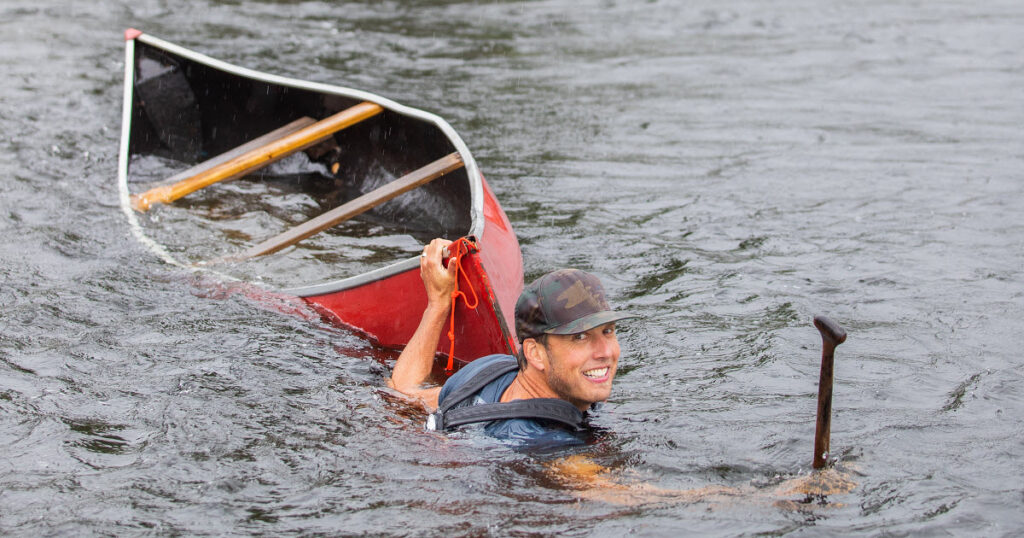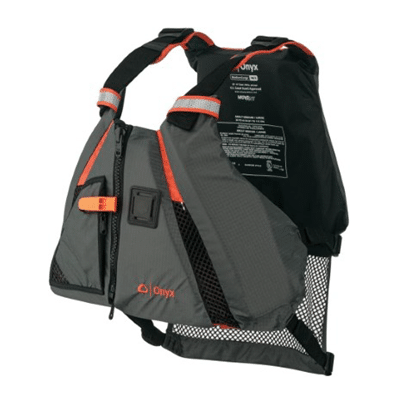If you’re interested in going for a canoeing trip, make sure you you’re a competent swimmer and have taken a course or two on canoeing and how to do self-rescue. This includes knowing what to do if you swamp a canoe. You can find self-rescue technique courses offered by organizations such as the Red Cross, the National Outdoor Leadership School, and the American Canoe Association.
Practice What to Do if You Swamp a Canoe
If you’re a beginner with a canoe, it’s best to stay on a lake rather than a river. That is because rivers have currents that could cause dangerous situations. If your canoe capsizes (tips in the water) and fills up, this is called swamping a canoe.
You will find that emptying it and getting back into the canoe is much more challenging if you’re in a river, especially a fast-moving one. In a river, I usually recommend getting your canoe to shore to empty it and re-enter (if you can), but if you’ve never emptied and flipped a canoe before I recommend practicing in a calm lake or pond.
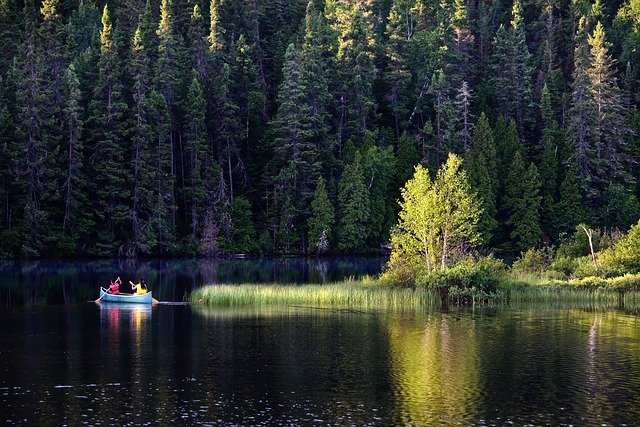
When your canoe capsizes, you need to empty it of water, get back in, and bring the canoe back to shore.
Remember that capsizing may mean that you will fall into the water, so always have your PFD or life jacket on while on the water. Also ensure that any valuable gear is tied down in the boat (so it doesn’t fall into the water and get washed away).
Steps to Take
If your canoe capsizes, keep a firm grasp on your paddle, ensure that you and everyone you’re with is okay, and carry out the procedures of self-rescue. Once you’ve done that, paddle your canoe back to the shore. Take time to warm up and dry out completely before thinking about continuing with your canoe trip.
Tools You’ll Need
It’s best if you have a canoe with loops at the ends. You should also have a bilge pump on hand, as well as natural sponges if possible.
In a moment I’ll explain the easiest way to flip and empty your canoe in deep water, but first let’s …
Remember the Dangers of Being on the Water
Did you know that more than 200 people drown or die as a result of hypothermia while boating every year?
Most of these deaths occur because the boat capsizes or someone falls overboard. It’s this reality that makes it necessary for you to be fully prepared for every situation.
Although it’s crucial that you understand the danger you could potentially be in if your boat capsizes, it’s equally necessary to stay calm. You’ll find it difficult or even impossible to think clearly if panic takes over.
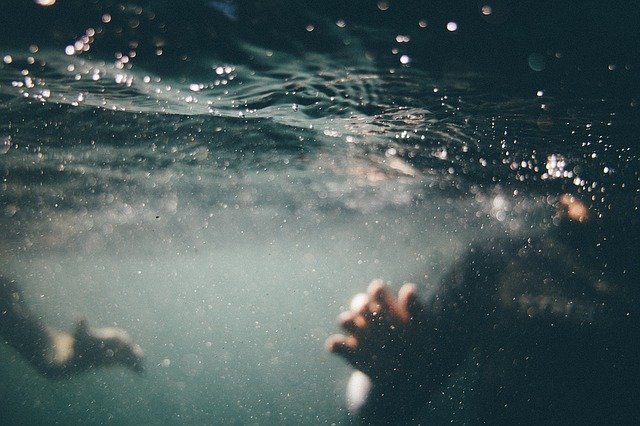
If you find that you’re unable to flip the canoe back over, try to climb up on it and position yourself on the hull until help arrives. If you’re unable to do this, then grip onto the canoe. It will help you float until someone comes to your rescue.
Always Wear a Life Jacket
Of course, you must have your PFD or life jacket on at all times when boating. So often we keep it in the boat with us but don’t wear it. Wear this piece of safety equipment at all times when you’re in your canoe. You won’t have time to put it on when you suddenly need it, and it can be difficult to fasten properly when you’re in the water.
Even if you’re an experienced swimmer, cold water can lead to hypothermia much more quickly than you might imagine. For example, if the water is 50 degrees Fahrenheit, you are at significant risk of falling prey to hypothermia before you have finished swimming three-quarters of a mile. Think about this when you’re paddling your canoe and choosing how close to shore you’ll travel.
Some people recommend bringing a VHF Marine Radio with you on your trip (I own this small floating handheld Cobra Model from Amazon). This way if your boat capsizes, you will be able to call for help from other boats nearby. This is important so that they can assist you or avoid you if necessary. Ensure that the radio you bring is a submersible model. Before trying to speak into the microphone speaker, shake out water that has gotten inside it.
Now, let’s get into how to empty and flip a swamped canoe in deep water.
What Is the Capistrano Flip?
You must be a strong swimmer in order to attempt a Capistrano Flip. This is why you really shouldn’t be on the water in a canoe at all (especially by yourself) if you aren’t entirely confident in your swimming skills.
If you swamp a canoe, you will face the challenge of tipping it back over into the correct position. This is difficult because of the weight of the water inside the canoe.
If you don’t have the assistance of another boat at hand, you can use the Capistrano Flip. This flip is especially useful if you have a lighter-weight canoe. With the Capistrano Flip, you will have to lift the boat out of the water. This video provides a good demonstration:
How to Flip a Swamped Canoe
To do this flip, get positioned underneath the overturned canoe. If you have someone to help you, each of you should hold onto the gunnels. Each person should be at opposite ends of the boat.
In order to get rid of suction, lift out one of the gunnels. Then, use a powerful scissor kick to lift the gunnel up and then flip the canoe so it’s back upright.
Getting Back Into a Canoe After Capsizing
You’ll still have to make quite a bit of effort to get back into the canoe once it’s upright.
If you’re alone, position yourself near the midpoint of the canoe.
If you’re with someone else, each of you should hold the opposite sides of the boat while staying quite close to the midpoint.
When you go to get into the canoe, you will need to use a special technique. If you’re with someone, make sure that you both get into the boat at exactly the same time. If you don’t, the canoe will become unbalanced and you could be right back where you started.
This video clip gives a good demonstration of flipping and re-entering a capsized canoe with two people:
Alternatives to the Capistrano Flip if You Swamp a Canoe
If you’re not a strong swimmer, you must not attempt a Capistrano Flip.
Instead, you will have to try to flip the canoe back up while it’s still swamped with water. You will need a bailer to help you with this, which could be something as simple as a milk jug with the bottom cut off (leave the cap on so you can use it to scoop a gallon of water out of the canoe at a time.
When bailing a swamped canoe, try to remove the water as quickly as you can. The canoe will start rising up out of the water as more and more water is removed and it will begin floating again as it should. Be aware that this could be quite a long process, even stretching to half an hour.
Pace yourself – the last thing you want is to become exhausted in the open water.
Get back into the canoe once you see that it is stabilized.
Know Your Strength (and be strong)
Both of these maneuvers underscore the importance of strength when canoeing. It’s an activity anyone can do, but when things go sideways (as they often do with outdoor sports), you must have the emotional and physical strength to deal with them.
Make sure that you’re in good physical shape before going canoeing, as this task takes quite a bit of strength. And as I said earlier, it’s best to practice swamping a canoe near shore in calm waters before you go canoeing. This way you know what you’re doing and won’t feel overwhelmed.
How to Get Back Into Your Canoe
To get back in your canoe, you can make sure your canoe is balanced by pulling yourself to the boat’s stern end. If you have a heavier canoe, this should be an advantage in this situation.
Alternatively, if you have an extremely lightweight canoe, this could be quite difficult. If you find you need more weight in the canoe to maintain the balance as you try to re-enter, try to put some more gear back into the area of the canoe where you need the counterbalance.
Hold onto the gunwales and then pull yourself up. Aim to position your chest on the gunwale near one of the canoe’s ends.
Be aware that if you’re going canoeing on your own, you may have difficulty flipping a heavy 2-man canoe by yourself. Consider using a smaller boat.
If you’re having trouble flipping your boat, release your gear into the water. If you have tied down any gear onto the boat, you may need to release it. In order to make sure that you’re able to do this, tie the gear relatively loosely.
The one piece of gear that you must make sure you keep no matter what is your paddle, and of course keep your life jacket on at all times.
Always Remember, Safety First!
To the uninitiated, going canoeing seems like a simple and easy pastime.
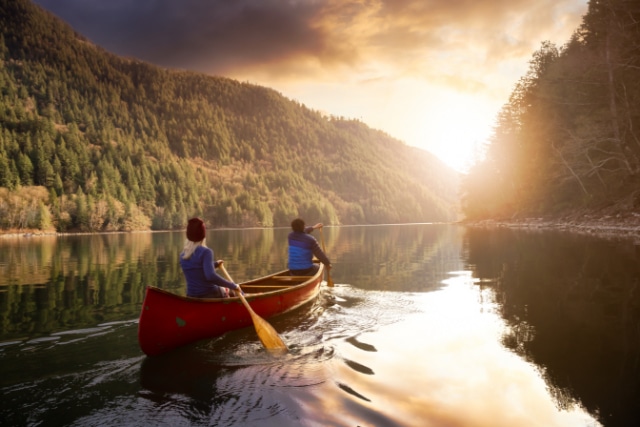
But there are several potential dangers that you face on the water, even a recreational craft like a canoe.
Being informed and prepared for anything that could occur is the key and part of getting home safely, and knowing what to do if you swamp a canoe is something you should understand (and practice) before heading out on any canoe excursion.

